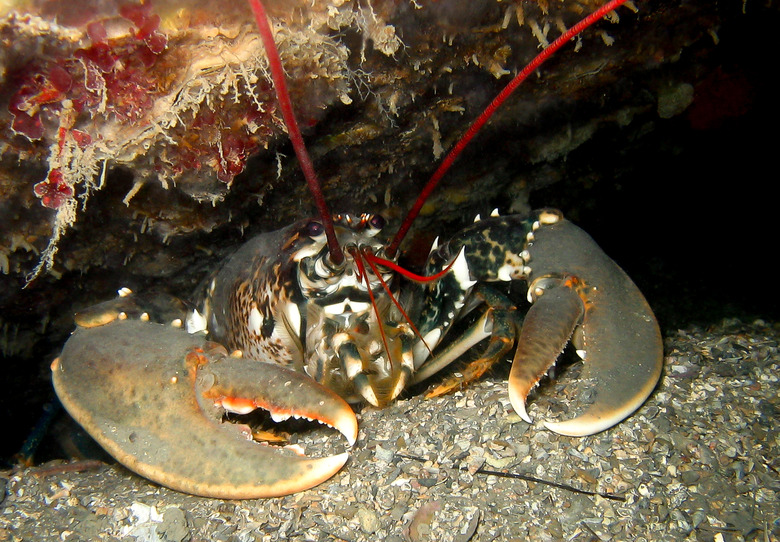Difference Between Cold Water & Warm Water Lobsters
The terminology of "cold-water" and "warm-water" lobsters mainly comes from the seafood industry: At the restaurant or supermarket, you're buying either cold-water or warm-water lobster tail. The distinction, however, does have some biological basis: It often distinguishes between true, or cold-water, lobsters and spiny/rock lobsters, the warm-water kinds, though this isn't universal.
Geographic Origin of Warm-water vs. Cold-water Lobsters
Geographic Origin of Warm-water vs. Cold-water Lobsters
Typically you'll find cold-water lobster in the North Atlantic and in the cool depths off the coasts of New Zealand, Australia and South Africa. Typically, warm water lobsters come named for the place of their origin, which might be the waters of Florida, California, the Mediterranean, the Caribbean or the South Pacific.
Relative Appearance & Classification
Relative Appearance & Classification
Both types of lobsters possess five sets of legs, but a cold-water lobster wields large claws as the first set. In terms of their heads and tails, warm-water lobsters look roughly similar to cold-water lobsters but can be easily distinguished at the front end by their lack of claws and their possession of long spiny antennae (hence the name "spiny lobster"). They have a bumpy or spiny shell and a meatier tail. Despite the name, cold-water and warm-water lobsters aren't closely related: They belong to different crustacean families, cold-water species often referred to as "true" lobsters as compared with spiny lobsters. It's important to note that fishermen and seafood purveyors may also distinguish between cold-water and warm-water varieties of spiny lobster.
Cold-water vs. Warm-water Meat
Cold-water vs. Warm-water Meat
Cold-water lobsters yield whiter meat than warm-water lobsters. The meat is easier to work with than warm-water lobster meat because it is firmer. Warm-water lobster tails contain more meat in them than cold-water lobster tails, but it is mushier and not as easy to handle. Cold-water lobsters have meat in their claws and their tails, but the only edible meat you'll find in a warm-water lobster lies in the tail. Cold-water lobsters have a sweeter meat than warm-water lobsters, the meat of which often has a fishier flavor.
Fresh or Frozen
Fresh or Frozen
Typically, fresh or live warm-water lobsters are only available in the areas where they are caught. In areas outside the range of warm-water lobster, purveyors often sell its tails in frozen form. Cold-water lobster is available fresh in many regions, even if they are not caught there: Because they are caught primarily in the northeastern and northwestern Atlantic, they can be shipped overnight and sold fresh in many areas of the U.S.
Cite This Article
MLA
Miller, Renee. "Difference Between Cold Water & Warm Water Lobsters" sciencing.com, https://www.sciencing.com/difference-water-warm-water-lobsters-8203302/. 4 May 2018.
APA
Miller, Renee. (2018, May 4). Difference Between Cold Water & Warm Water Lobsters. sciencing.com. Retrieved from https://www.sciencing.com/difference-water-warm-water-lobsters-8203302/
Chicago
Miller, Renee. Difference Between Cold Water & Warm Water Lobsters last modified March 24, 2022. https://www.sciencing.com/difference-water-warm-water-lobsters-8203302/
